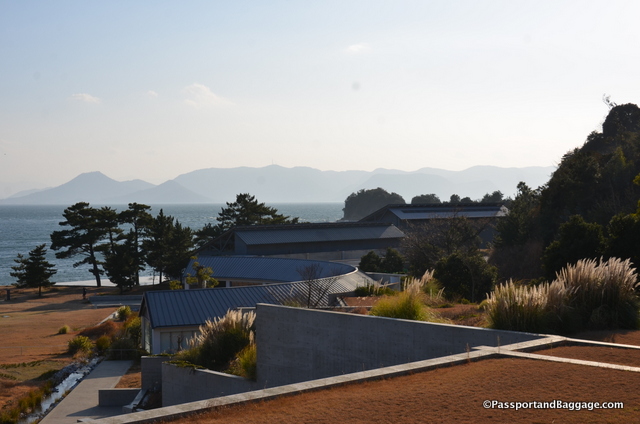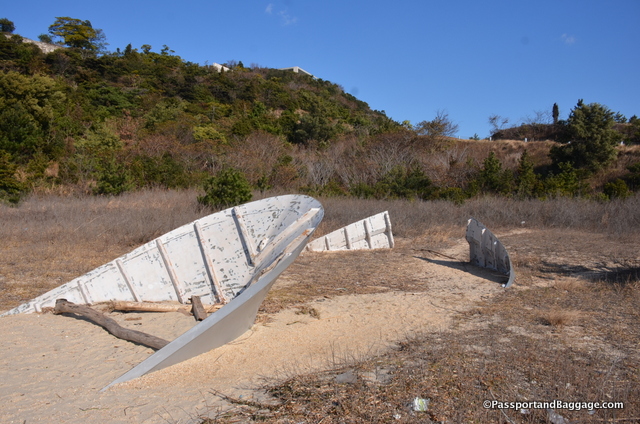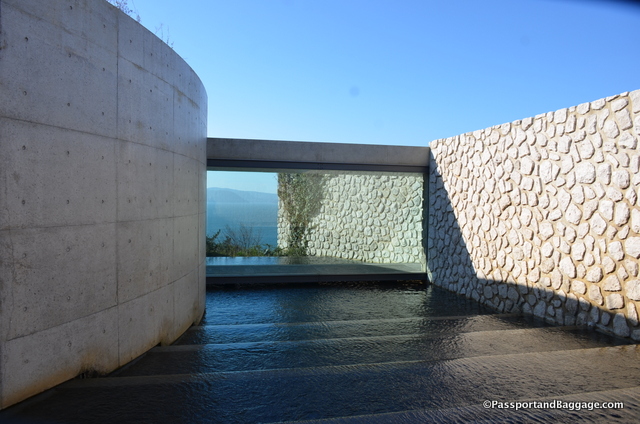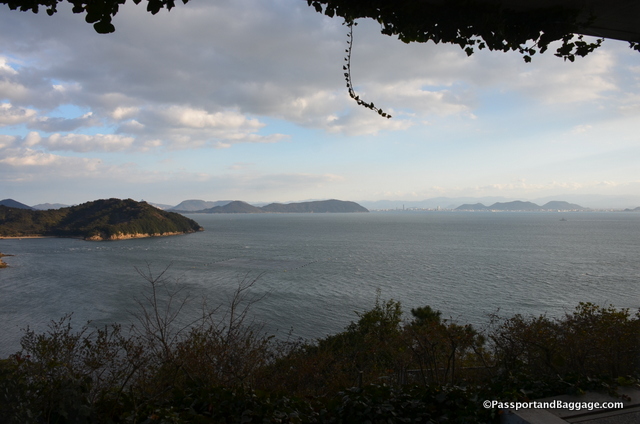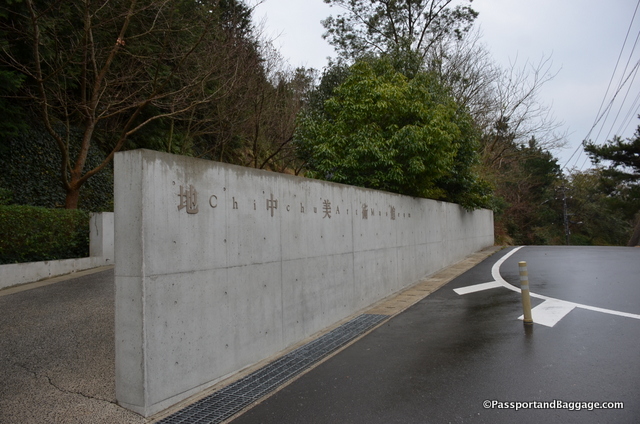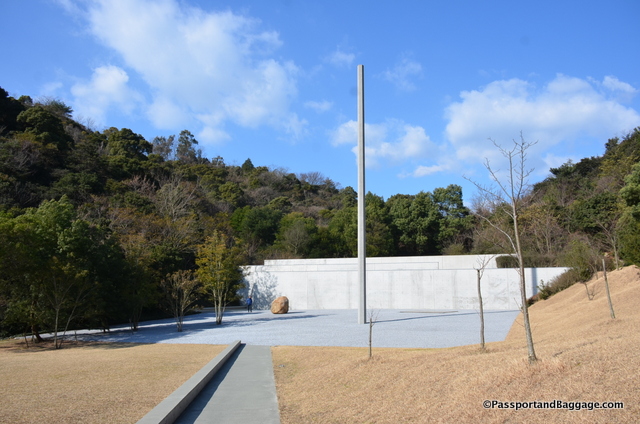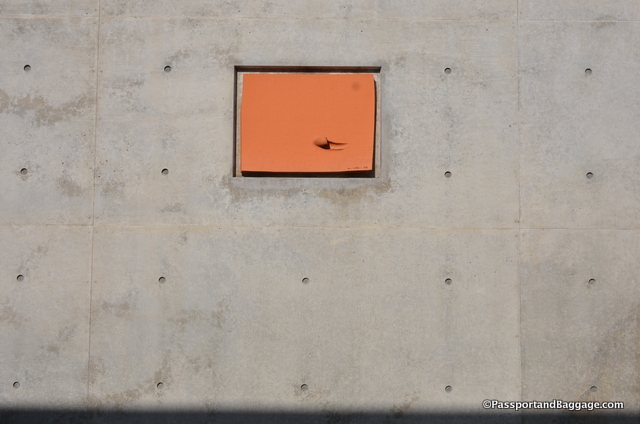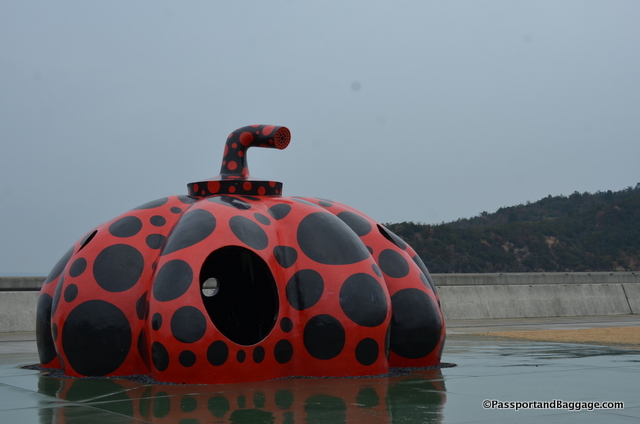January 2018
Benesse – To Live Well

“Pumpkin” by Yoyoi Kusama is the signature piece of Naoshima Island. The Yellow Pumpkin sits on a pier in front of the Benesse Park Hotel
The biggest employer on Naoshima is a Mitsubishi metals processing plant, but due to automation, and therefore, downsizing, the population of the island dropped from around 8,000 in the 1950s and 1960s to a little over 3,000 now.
The island has been “saved” by art thanks to Benesse Holdings, an education, and publishing conglomerate best-known for Berlitz, the language school company.

The Benesse Park houses one of the larger restaurants, The Terrace, as well as a few small public rooms for hanging out and gazing at the sea. “Cylinder Bisected by Plane” by Dan Graham sits in the middle of this photo
According to Becoming, a book on the creation of Benesse, Benesse opened with the aim of providing visitors with a luxurious stay surrounded by works of art in a natural environment. The former head of Benesse Holdings, the late Soichiro Fukutake, had dreamed of opening a campground for children from all over the world, he met with the then town mayor of Naoshima, the late Chikatsugu Miyake who had wanted to create an environmentally friendly cultural and educational district in the southern part of the island. These two men formed a mutual agreement to develop the island of Naoshima. Activities commenced with a trial camp for children, operated by employees of Fukutake Publishing. The offshoot of this was Fukutake’s company buying a huge piece of land and hiring world-famous architect Tadao Ando to design museums and luxury lodgings that now make up the Bennese Art Site.
The first art project for the site was Open Air ’94 Out of Bounds, organized as an outdoor exhibition space in 1994. Out of Bounds referred to the crossing of borders in hope that Naoshima be linked to the rest of the world. Pumpkin (the yellow one) by Yayoi Kusama was debuted in this exhibition, as well as Shipyard Works by Hinro Ohtake and Time Exposed by Hiroshi Sugimoto.
There are four places within the Benesse properties to stay. The Oval, The Park, The Beach and The Benesse House Museum. Each has its own unique flavor and varying prices.
Dining is difficult, there are a few restaurants on the island, but the hotels have several dining rooms, and while pricey, the food is world class. You can choose between Japanese or European cuisine in many of them. Others are fixed menus by phenomenal chefs.
There are other less pricey places to stay on the island, off of the Benesse properties, and the entire island is accessible by a free bus if you are staying within the Benesse properties or a ¥100 public bus.
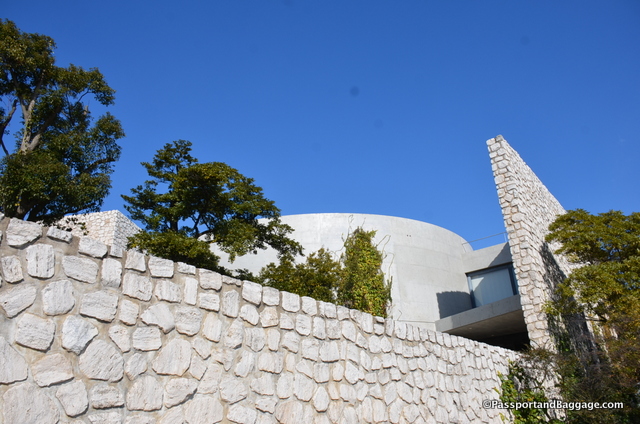
There are ten rooms available within the Benesse House Museum, and you are allowed to wander the hotel after closing to enjoy the art.
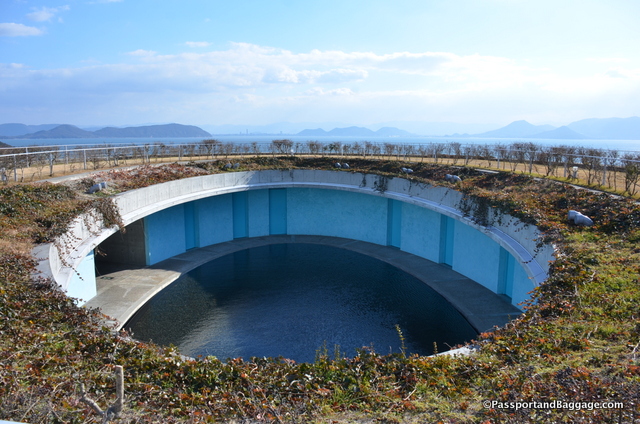
The Oval sits atop the highest peak on Naoshima. It has only 6 rooms, all with spectacular views. Access to the oval is through a funicular that requires your room key for access, making The Oval a very private retreat.
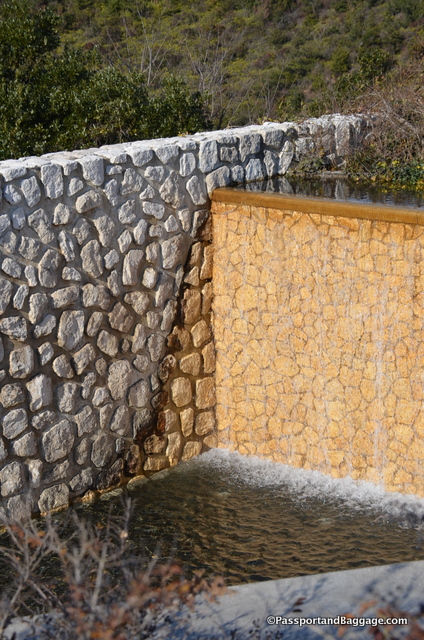
At The Oval water flows down a waterfall and into an eternity pool suggesting the concept of water flowing from the mountain streams to the ocean.
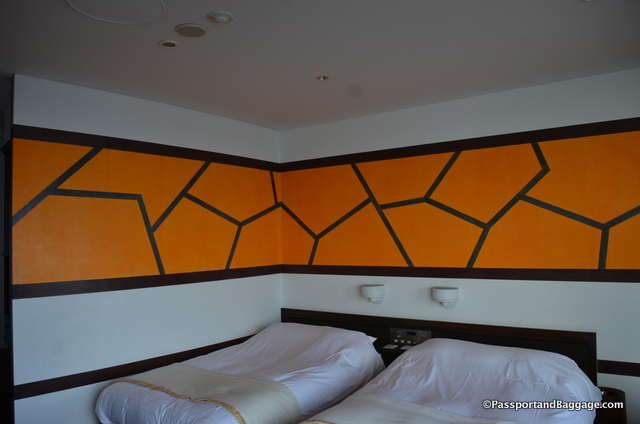
Every room in all of the accommodations has fine art in them. This particular one is in The Oval and painted directly on the wall by David Tremlett. Many of the others contain framed drawings or paintings.
The Benesse Art Site group has truly thought of everything. You are handed reams of information upon check-in, and every staff member I have encountered is well versed in all the ins and outs of the island. English is spoken by most everyone, and in fact, it is now been added to the school curriculum on the island.
There are two ports on Naoshima, and getting here is done via ferry from Takamatsu to the Miyanoura Port, there are five throughout the day, with more added during the summer. Timing your arrival to and from the airport should be taken into consideration. The ferry ride is ¥510. There are locals that take cars onto the island, via the car ferry, but most transportation is bike, moped, feet or public bus.
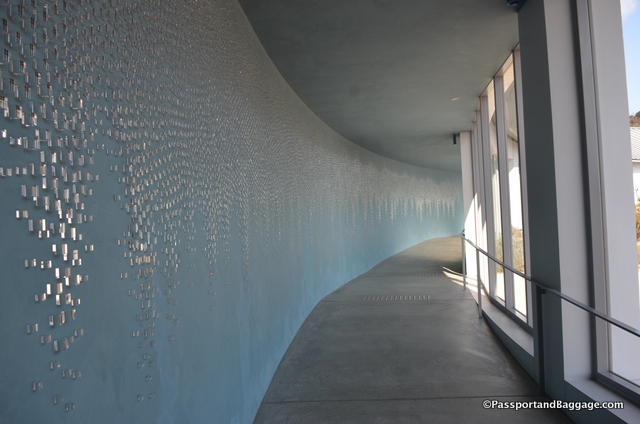
Blind Blue Landscape is a site-specific work by Teresita Fernandez in the corridor to the Terrace Restaurant
I am here during the Christmas/New Year holiday season. That is considered high season price wise, but it is a divine time to come as the crowds are minimal. The hotels are full, but no reservations are needed for the exhibits, and a wait of 10 minutes for a timed exhibit is all I have suffered. In 2016, 800,000 people visited the island for the Triennial, I can not imagine fighting that type of crowd.
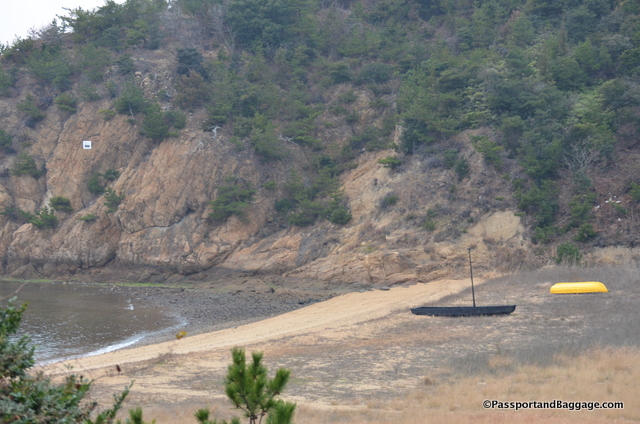
These two boats are part of a piece by Jennifer Bartlett. There is a three-part canvas in the museum with the two boats painted, and two of the boats sitting on the floor in front, then as you look out the glass towards the sea, there are these two boats set in the same position on the same beach that is in the painting
Photography is not allowed in any of the museums, so a purchase of the book Remain in Naoshima, is the best guide to the collection, however, there are many outdoor installations that can be photographed. The lack of descriptions of the art was the only place I feel they missed a beat. Most pieces were marked solely with the name of the piece, the date, and the artist. The book Remain in Naoshima is in each room, so studying the pieces is easy if you are so inclined, but the stories to many of the pieces are of interest, and much I did not learn until I returned to the room and flipped through the book.
The Chichu museum (literally museum underground) is another Tadeo Ando creation, built in 2014 it is on the southern portion of the island. The building is a stunning piece of architecture all by itself. The site features only three artists, with permanent installations, these are by Walter De Maria and James Turrell, as well as painted works in the Water Lilies series by Claude Monet. These are said to be the only paintings by Monet that can be viewed in natural light, and you take your shoes off to enter the gallery. – Tickets for the Chichu Museum are ¥2060, you purchase a ticket at a small building then walk through a sweet little garden to reach the entryway to the actual museum.
Opened in time for the 2010 Setouchi Triennale, the Lee Ufan Museum is one of the more recent additions to the Benesse collection. The museum features works by the Korean contemporary artist Lee Ufan, who was born in Korea but has been working and teaching in Japan. On display are large installations made of stone, concrete and huge slabs of iron, as well as a number of paintings from earlier in his career. This building was also designed by Tadeo Ando, and like his other buildings, it is filled with different geometric shapes in reinforced concrete and stunning outdoor spaces. The entry to the Lee Ufan Museum is ¥1030.
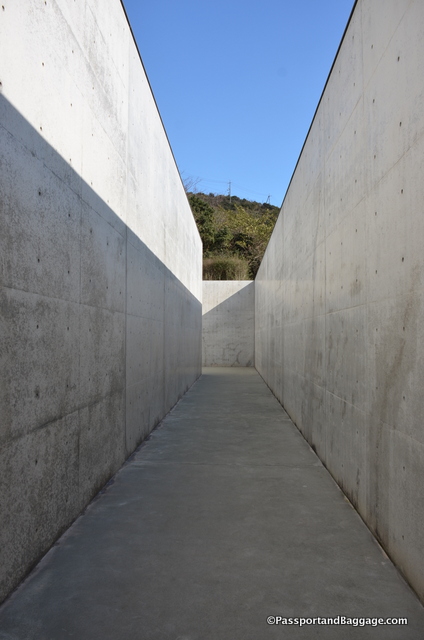
The entry to the museum is on the left-hand side of the building as to not disturb the elegance of the front.
There is a huge selection of outdoor sculptures spread throughout the property, you can pick up a map from any of the front desks and enjoy the day wandering and seeking them out.
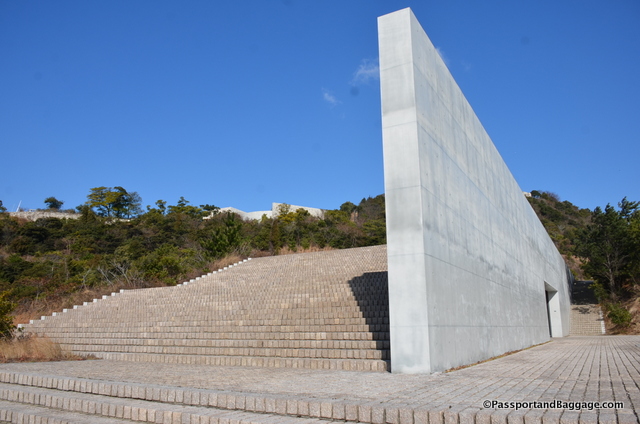
The stairway goes up and over Seen/Unseen Known/ Unknown by Walter de Maria. This sits near the Benesse private pier with other outdoor sculpture
This post has been about the Bennese Art Site, read the next post for information about the town itself, and more art.
